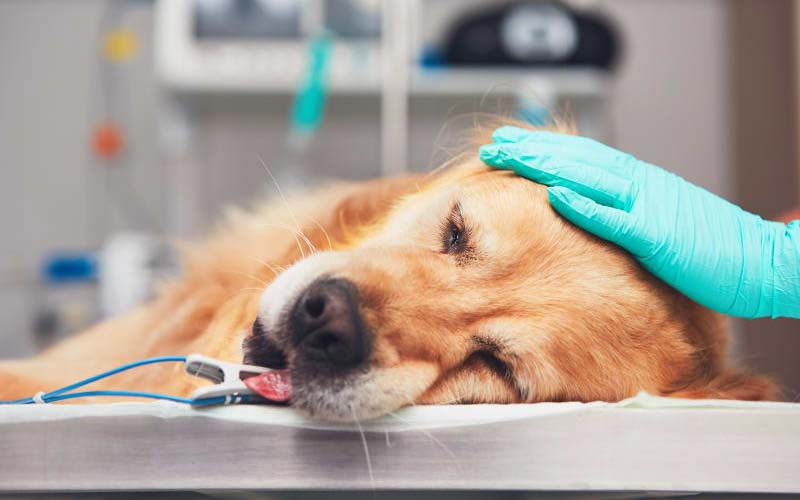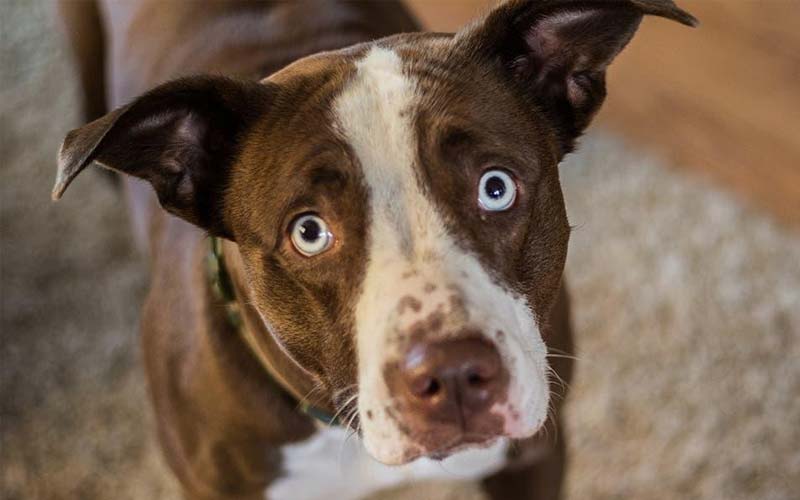As a dog owner, you likely know how curious and adventurous your canine companion can be. While this playful curiosity often brings joy, it can sometimes lead to serious health concerns, especially when your dog ingests something they shouldn’t. One of the most dangerous outcomes of such behavior is a bowel obstruction, a condition where a blockage in the intestines prevents food and fluids from passing through the digestive tract.

Bowel obstructions in dogs are not only painful but can also be life-threatening if not treated promptly. Understanding the symptoms, causes, and urgency of treatment is crucial for ensuring your pet’s well-being. In this article, we will explore how long a dog can survive with a bowel obstruction, the signs to watch for, and why immediate veterinary intervention is essential. By being informed, you can take swift action and potentially save your dog’s life.
1. What Is a Bowel Obstruction in Dogs?
Definition: A bowel obstruction in dogs occurs when a blockage within the intestines prevents the normal passage of food, fluids, and gas through the digestive system. This condition can be partial or complete and poses a significant threat to a dog’s health, potentially leading to severe complications if not addressed promptly. When the intestines are obstructed, the normal movement of digestion is halted, causing the buildup of contents, which can lead to pain, vomiting, and other serious symptoms.
Types of Obstructions: Bowel obstructions in dogs can be classified into two primary types: partial and complete. A partial obstruction allows some fluids and gas to pass through but still restricts the flow enough to cause significant discomfort and health issues. A complete obstruction, on the other hand, fully blocks the intestinal passage, leading to more severe symptoms and requiring immediate intervention.
Obstructions can also be categorized based on their causes: internal or external. Internal causes include growths such as tumors or polyps that develop within the intestines, narrowing or completely blocking the passage. External causes often involve the ingestion of foreign objects like bones, toys, or fabric that get lodged in the digestive tract. Additionally, a condition known as volvulus, where the intestines twist around themselves, can also cause a blockage, cutting off blood supply and leading to tissue death.
Common Causes:
- Foreign Objects: Dogs are notorious for swallowing objects they shouldn’t, such as toys, bones, or household items, which can lead to an obstruction.
- Tumors: Abnormal growths within the intestines can block the digestive tract, leading to a gradual or complete obstruction.
- Volvulus (Intestinal Twisting): This life-threatening condition occurs when the intestines twist on themselves, obstructing the flow of blood and digestive contents.
- Hernias: Portions of the intestine can get trapped in a hernia, causing a blockage that restricts movement through the digestive system.
2. Recognizing the Symptoms of a Bowel Obstruction
Early Signs: Recognizing the early signs of a bowel obstruction in dogs is crucial for timely intervention. Initially, a dog may show subtle symptoms such as intermittent vomiting, particularly after eating. You might also notice a loss of appetite as the dog experiences discomfort when trying to eat. Abdominal pain is another early indicator; your dog may appear restless, whimper when touched, or adopt a hunched posture to relieve pressure on the stomach.
Progression: As the obstruction worsens, so do the symptoms. Vomiting typically becomes more frequent and severe, with the dog unable to keep down any food or water. You may notice bloating as the abdomen becomes distended due to trapped gas and fluids. Lethargy sets in as the dog becomes increasingly weak and exhausted from the inability to absorb nutrients or maintain hydration. Diarrhea or constipation may also occur, depending on the location and severity of the obstruction.
Red Flags: There are specific symptoms that should prompt immediate veterinary attention. Severe, persistent pain that causes the dog to cry out, significant bloating, and rapid dehydration are all signs that the condition has progressed to a critical stage. At this point, the dog may be at risk of tissue death in the intestines, which can lead to septicemia, a potentially fatal infection. Recognizing these red flags and seeking urgent veterinary care can make a significant difference in the outcome.

3. Why Timing Matters: The Risks of Delaying Treatment
Complications: Delaying treatment for a bowel obstruction in dogs can lead to several serious complications. As the obstruction persists, pressure builds within the intestines, cutting off blood flow to the affected area. This lack of circulation can cause tissue death, also known as necrosis, which severely compromises the intestinal wall. If left untreated, the dead tissue may perforate, allowing bacteria and intestinal contents to leak into the abdominal cavity, leading to peritonitis, a life-threatening infection. Additionally, septicemia, a dangerous systemic infection, can occur as bacteria enter the bloodstream through the compromised intestinal wall.
Timeline: The timeline of deterioration can vary depending on the severity of the obstruction, but the condition can escalate quickly. In cases of complete obstruction, a dog may only have a few days before severe complications set in. Within 24 to 48 hours, the dog may begin to show signs of dehydration and significant pain, with a rapid decline in overall health. By 72 hours, the risk of necrosis and perforation increases substantially, making immediate treatment critical to survival.
Case Study: Consider the case of Max, a five-year-old Labrador Retriever who swallowed a large piece of a toy. Initially, Max’s owners noticed that he was vomiting occasionally and seemed less interested in food. They assumed it was a minor stomach upset and decided to monitor him at home. However, within two days, Max’s condition worsened—he began vomiting continuously, his abdomen became swollen, and he grew lethargic. By the time Max was taken to the vet, his intestines had begun to necrotize, requiring emergency surgery. Although Max survived, his recovery was long and challenging, illustrating the critical importance of early intervention.
4. Diagnosing a Bowel Obstruction in Dogs
Veterinary Examination: When a dog presents with symptoms of a possible bowel obstruction, a thorough veterinary examination is the first step in diagnosis. The vet will conduct a physical exam, checking for signs of pain, bloating, and other symptoms. A detailed history of the dog’s behavior, diet, and any possible ingestion of foreign objects will also be taken into account.
Imaging and Tests: To confirm the diagnosis, the vet may use imaging techniques such as X-rays or ultrasounds. X-rays can reveal the presence of foreign objects or abnormal gas patterns within the intestines, which are indicative of an obstruction. Ultrasounds provide a more detailed view of the soft tissues, helping to locate the blockage and assess the condition of the surrounding tissues. In some cases, exploratory surgery may be necessary if imaging does not provide a clear diagnosis or if the vet suspects a more complicated condition.
Blood Work: Blood tests are often performed to assess the dog’s overall health and identify any complications related to the obstruction. Elevated white blood cell counts may indicate an infection, while electrolyte imbalances and dehydration levels can provide insight into the severity of the condition. Blood work also helps the vet determine the best course of action for treatment and manage any underlying issues that may complicate surgery or recovery.

5. Treatment Options and Their Effectiveness
Surgical Intervention: Surgery is the most common and effective treatment for bowel obstructions in dogs, especially in cases of complete blockage or when a foreign object is involved. During the procedure, the vet will locate and remove the obstruction, and in severe cases, may need to remove damaged sections of the intestine. Surgery typically requires general anesthesia, and recovery can vary depending on the extent of the surgery and the dog’s overall health. Post-operative care is crucial, involving pain management, antibiotics to prevent infection, and a carefully monitored diet.
Non-Surgical Options: In certain situations, non-surgical options may be considered, particularly if the obstruction is partial or the ingested material is small enough to pass through the digestive tract naturally. Endoscopy, a minimally invasive procedure, can sometimes be used to retrieve the foreign object without the need for full surgery. However, this method is limited to obstructions located in the upper digestive tract and is not suitable for all cases. Laxatives or medications to stimulate intestinal movement might be used, but these are generally only effective in very mild cases and under strict veterinary supervision.
Prognosis: The prognosis for a dog with a bowel obstruction largely depends on the timing of the intervention and the severity of the obstruction. Dogs that receive prompt surgical treatment have a good chance of recovery, although the risks increase with the duration of the obstruction and the extent of any complications. Delayed treatment can result in more complex surgeries, longer recovery times, and a higher risk of long-term health issues or even death. Therefore, early diagnosis and treatment are key to a positive outcome.
6. Recovery and Aftercare
Post-Surgery Care: After surgery, your dog will need close monitoring and care to ensure a full recovery. Post-surgery care includes managing pain with prescribed medications, preventing infection with antibiotics, and gradually reintroducing food and water. Your vet may recommend a special diet that is easy on the digestive system, typically starting with small, frequent meals of bland food. It’s essential to follow your vet’s instructions carefully during this period to avoid complications.
Signs of Recovery: Positive signs of recovery include a return of appetite, normal bowel movements, and increased energy levels. It’s important to observe your dog for any signs of discomfort, vomiting, or changes in behavior that could indicate complications. Regular follow-up visits with the vet will help monitor your dog’s progress and address any concerns that arise during the recovery phase.
Long-Term Health: To prevent future obstructions, it’s important to make lifestyle adjustments, such as keeping potential hazards out of reach and feeding your dog a well-balanced diet that supports digestive health. Regular vet check-ups and monitoring for any signs of digestive issues can help catch potential problems early, ensuring your dog’s long-term well-being.

Conclusion
Bowel obstructions in dogs are a serious medical emergency that can rapidly escalate from a mild inconvenience to a life-threatening situation. As a responsible dog owner, recognizing the signs of an obstruction, understanding the risks of delaying treatment, and knowing the importance of prompt veterinary care can make all the difference in your dog’s outcome. From the initial symptoms of vomiting and abdominal pain to the critical need for timely diagnosis and treatment, every moment counts in protecting your dog’s health.
If you suspect that your dog may be suffering from a bowel obstruction, do not hesitate to seek immediate veterinary attention. Early intervention is key to preventing severe complications and ensuring a successful recovery. By acting quickly, you can safeguard your dog’s well-being and provide them with the best chance for a long, healthy life. Remember, when it comes to your pet’s health, it’s always better to be safe than sorry. Take action at the first sign of trouble—your dog’s life may depend on it.